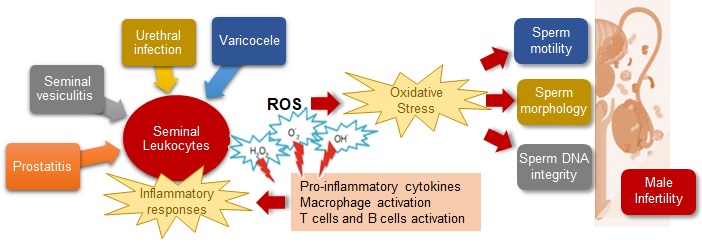
Open Access

Subscription Access
Role of leucocytes in reproductive tract infections and male infertility
Ooi Chai Theam, Sulagna Dutta, Pallav Sengupta
Abstract
Oxidative stress (OS), occurring as a result of redox imbalance, have been considered a leading cause of male infertility. Redox imbalance is mediated by excessive production of reactive oxygen species (ROS) exceeding the antioxidant capacity. In seminal plasma, the main contributor of ROS are the infiltrated and resident leukocytes, although modest seminal levels of ROS are always maintained by spermatozoa and other testicular cells. Leukocytes are common constituents of seminal plasma even in healthy and fertile men. However, it has been suggested that during an inflammatory process the number of seminal leucocytes increases and activated leading to leukocytospermia. It is usually associated with reproductive tract infections, and subsequently, its impact on male infertility should not be overlooked. In such condition, leukocyte mediated ROS production and induction of OS can significantly deteriorate sperm morphology and functions through lipid peroxidation. This chain of oxidative damage disrupts the sperm membrane, intracellular components, as well as damages sperm nuclear and mitochondrial DNA. These may account for reduced semen quality and lead to male infertility, although further detailed interventions are needed to draw conclusive remark on the association of seminal leukocytes with male infertility. Thus, the present review article aims to provide a precise overview of the exact roles and sources of seminal leukocytes, the mechanism by which they operate during an inflammatory and healthy microenvironment and their association with male infertility.
Keywords
leukocytes; reactive oxygen species; ROS; oxidative stress; lipid peroxidation; nuclear DNA damage; mitochondrial DNA damage
Full Text:
PDF

ISSN 2347–9825
Authors/visitors are advised to use Firefox browser for better experience of journal site.
Open Access: Researcher from developing/low economy countries can access the jorunal contents through WHO-HINARI .

 ISSN 2347-9825
ISSN 2347-9825

